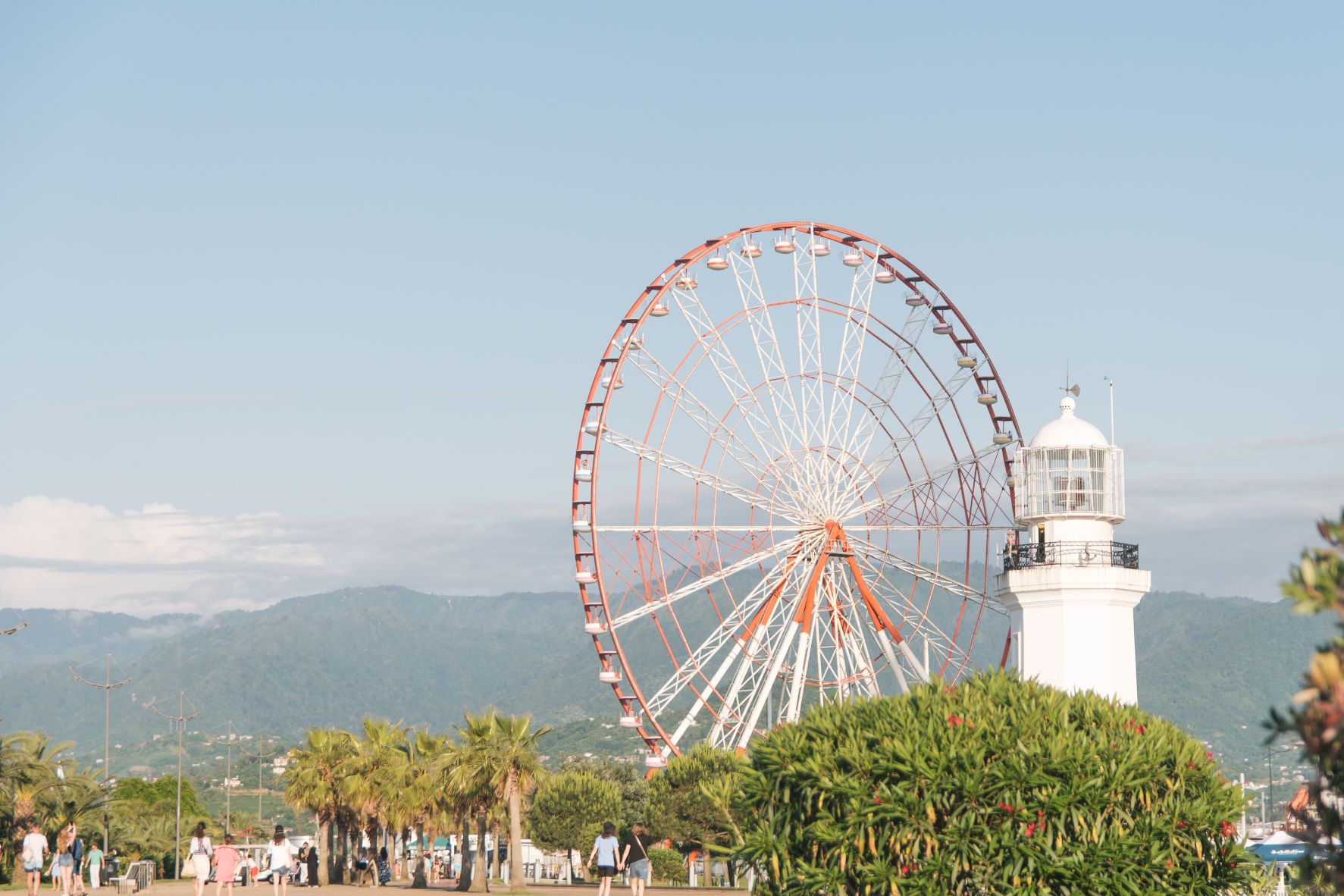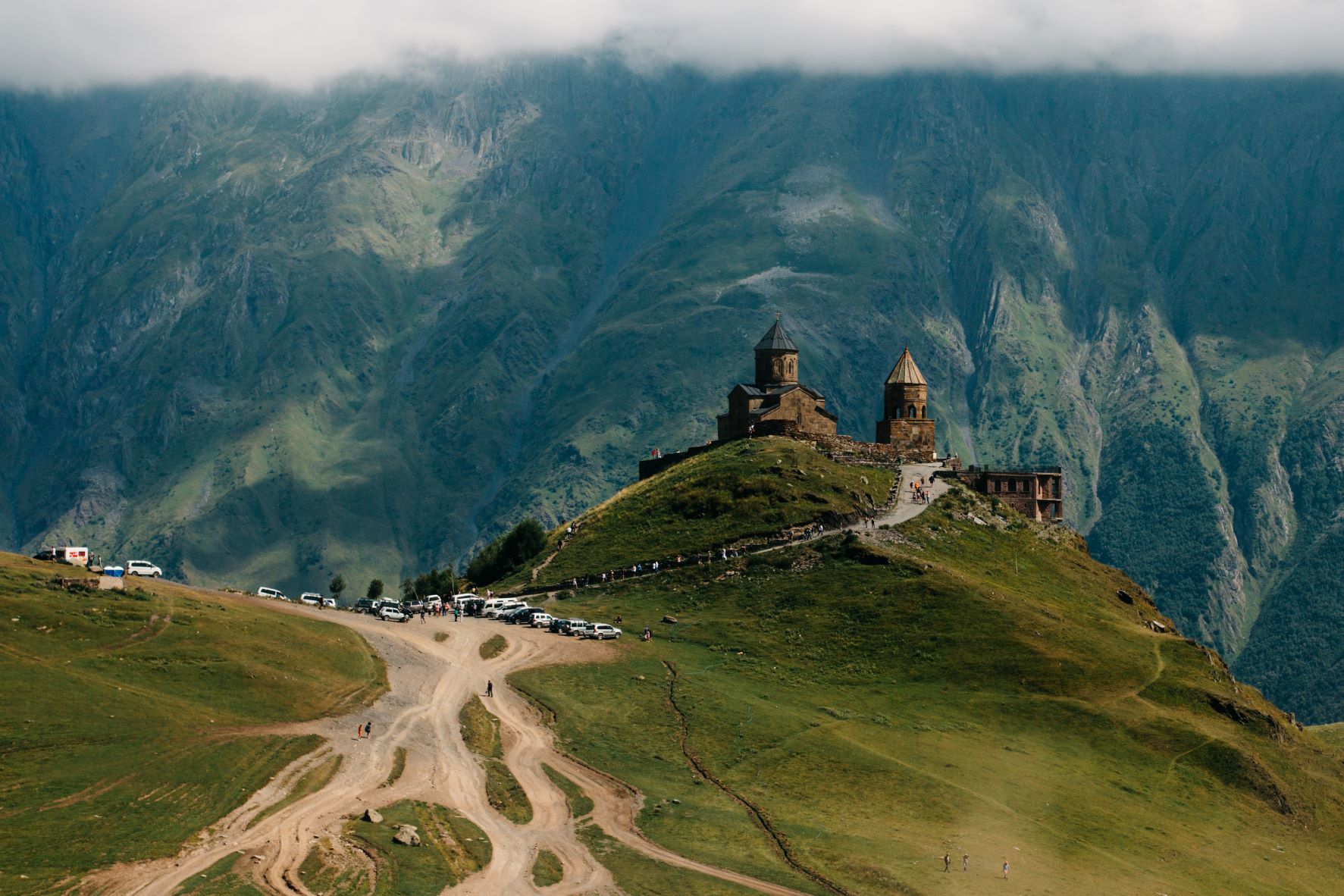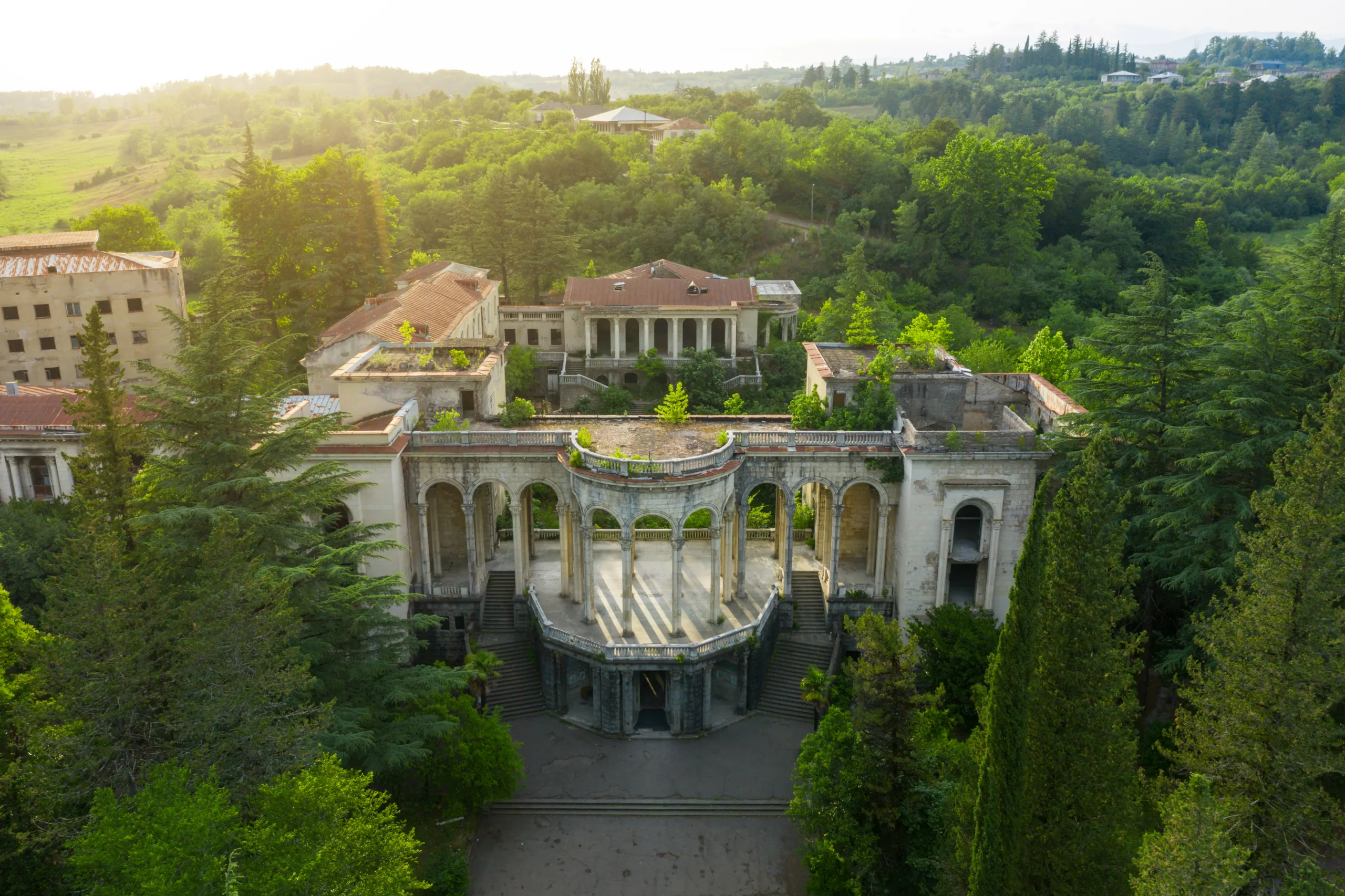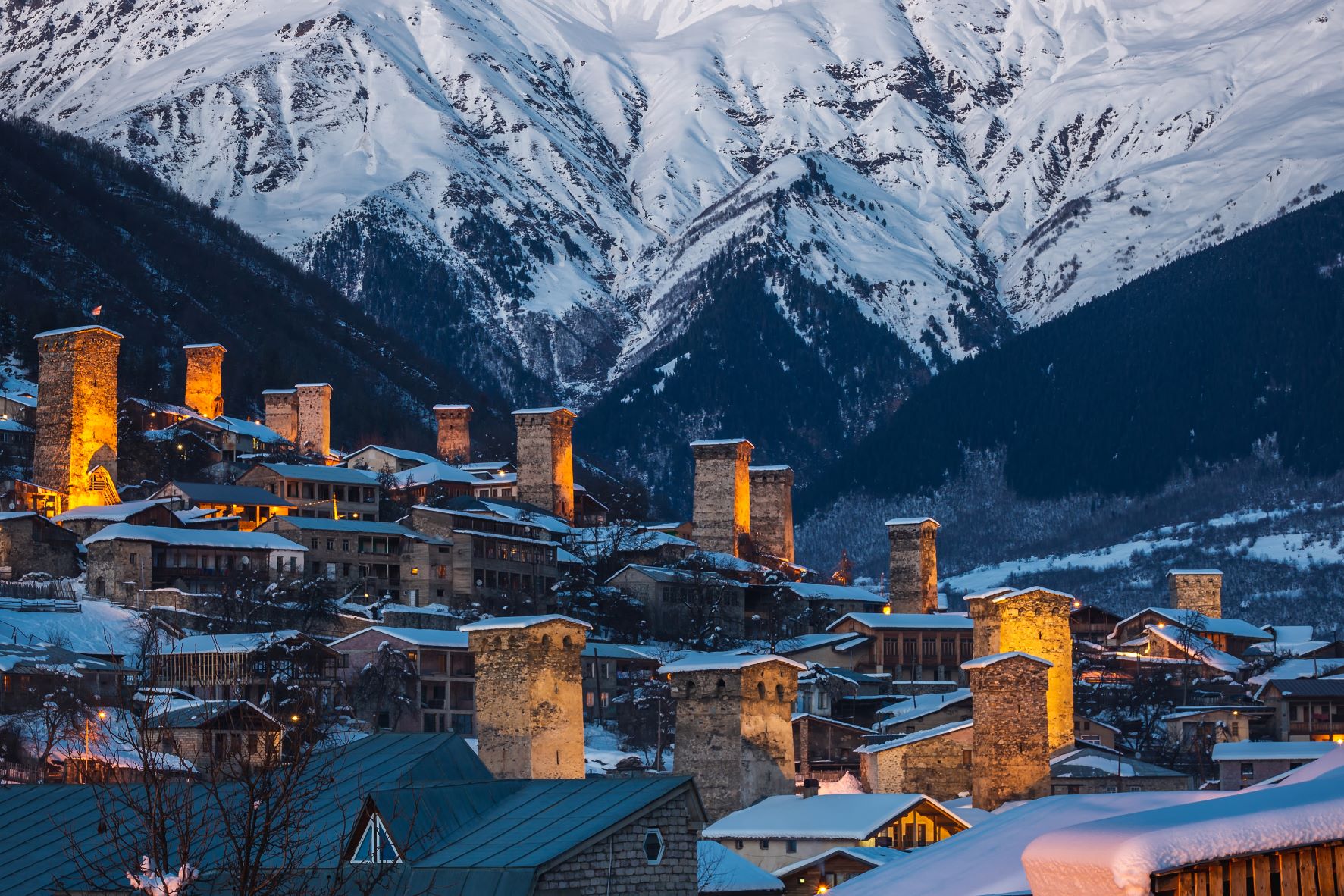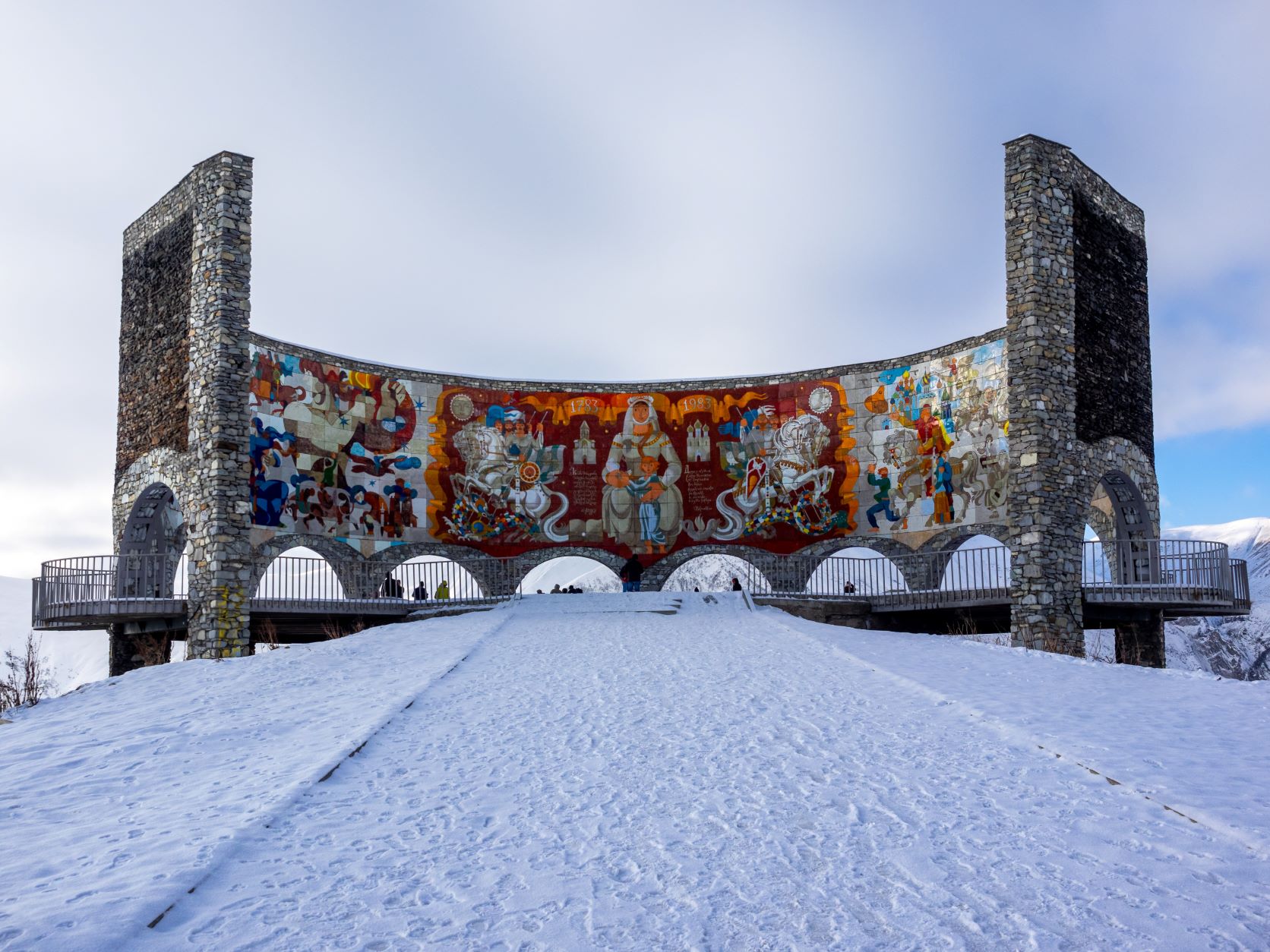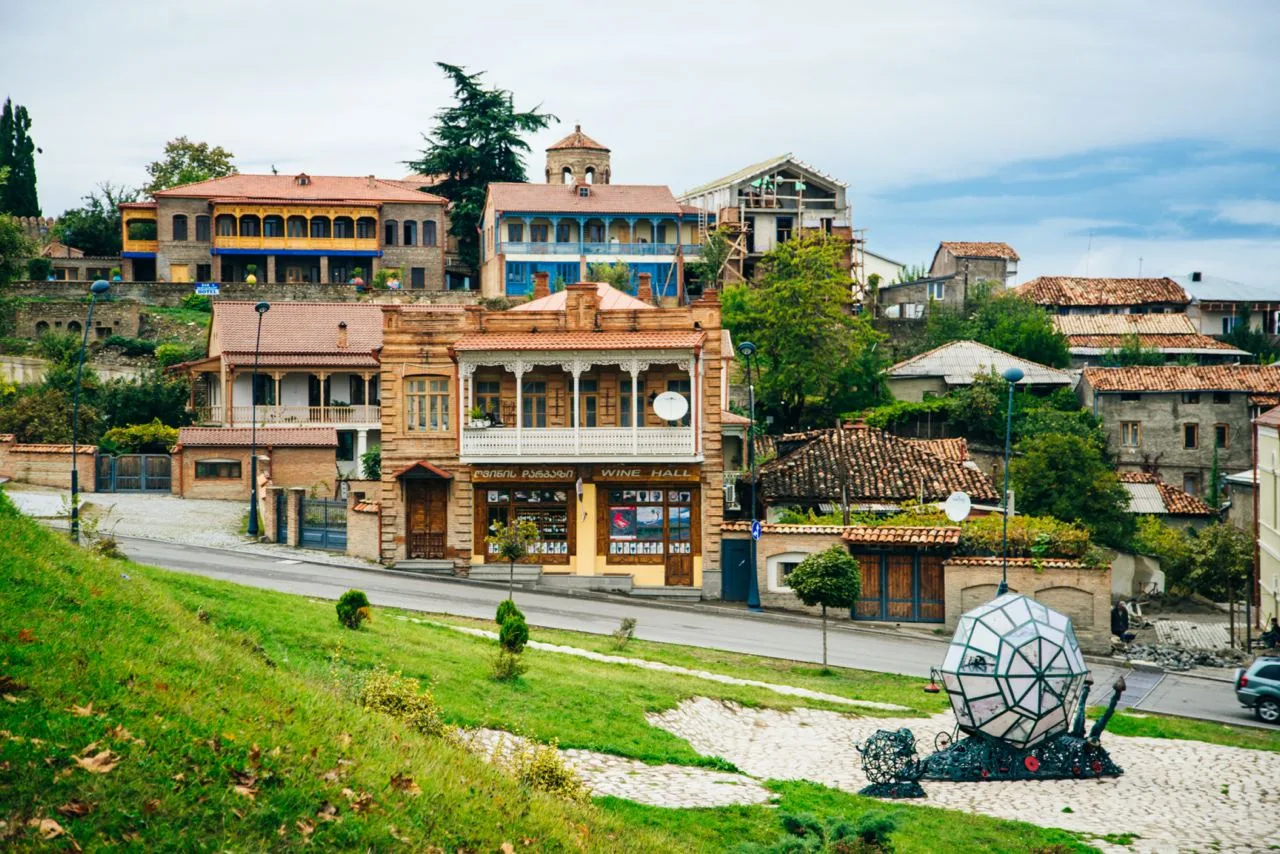1. Why Visit Mtskheta?
Mtskheta is a must-see destination for nearly every tourist. It’s easy to see why: the city is conveniently located just 25 km from Tbilisi. Once the capital of the Georgian kingdom, Mtskheta is home to some of the oldest churches and monasteries, which date back to the early 4th century when Christianity was just beginning to take root in Georgia. Regarding what to see in Mtskheta, the historical part of the city is recognized as a UNESCO World Heritage Site, making it an essential stop for all visitors.
If you’re planning a trip to Batumi or Kazbegi, you’ll pass through Mtskheta and the famous Jvari Monastery. This spot is particularly popular among romantic Georgians who bring their dates here to enjoy breathtaking sunsets at the confluence of two rivers. Get the idea! What else can you see in Mtskheta? Check out our overview of attractions!

2. Svetitskhoveli Cathedral: A Must-Visit in Mtskheta
📍41.842499724290725, 44.72074059428985
In the 4th century, the first church in Georgia was built on the site of what is now one of the country’s major cathedrals. The location was chosen for a special reason: according to local legend, a man from Iveria drew lots and received the tunic of Jesus, which he brought back to his homeland.
The sacred garment was buried here, and over time, a cedar tree grew from its resting place. The wood from this tree was used to create the pillars of the original church. One of these columns even miraculously produced myrrh, giving it special significance. In Georgian, “Svetitskhoveli” means “the living pillar,” which is how the cathedral got its name.
Invaders destroyed the church in the 5th century, but it was rebuilt in the 11th century. Today, Svetitskhoveli Cathedral remains remarkably well-preserved despite the passage of time. Its exterior features intricate stone carvings, while inside, you can still see ancient frescoes. For many years, this sacred site has served as both a coronation place and a burial ground for Georgian kings, with tombstones that tell their stories still visible within the cathedral.
From Personal Experience
At the heart of Svetitskhoveli lies the legendary living pillar—a hidden treasure sealed away behind layers of stone. You might guess its exact location if you notice clusters of devotees gathered near it. Locals believe placing small crosses against this holy surface imbues them with spiritual energy lasting throughout each calendar year.
As you step onto temple grounds, expect encounters with street performers seeking alms. Refusing donations might earn you less-than-flattering comments from these persistent panhandlers. Nonetheless, witnessing history unfold amidst serene surroundings makes every visit worthwhile.
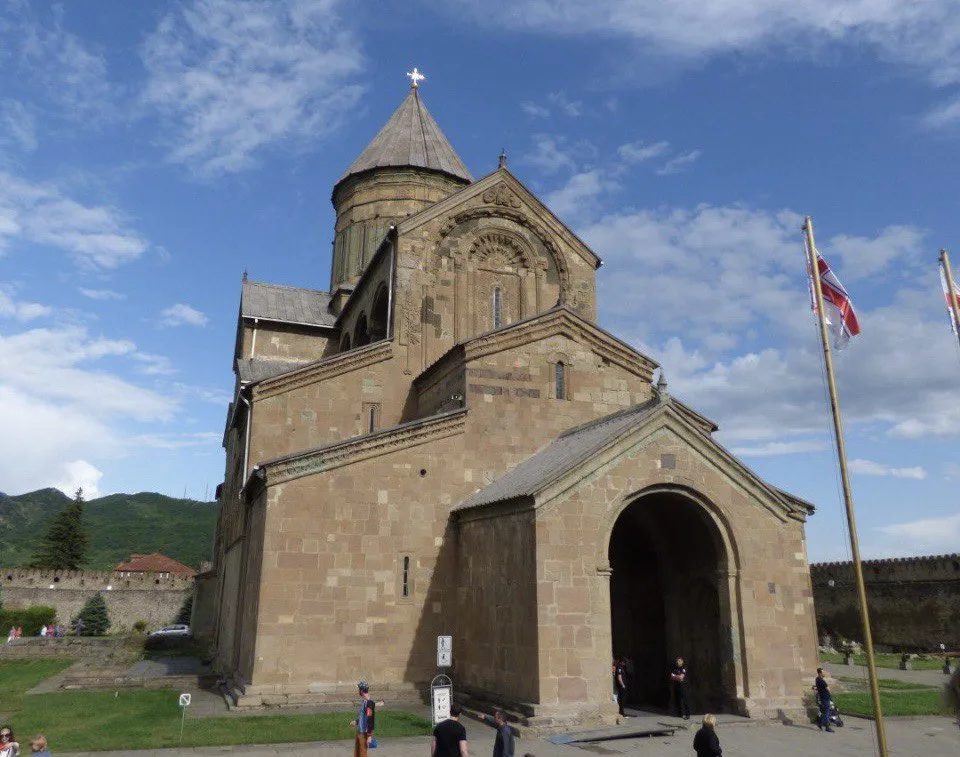
3. Jvari Monastery – The Cross of Saint Nino, UNESCO World Heritage Site
📍41.83870333113002, 44.73320201120508
Jvari Monastery is a popular landmark in Georgia, and it has an interesting legend behind its name. In the 4th century, Saint Nino placed a cross at this site to symbolize the victory of Christianity over paganism. Initially, a church was built on “Cross Mountain,” followed by the Jvari Monastery in the 7th century. Jvari means “cross” in Georgian.
While the monastery isn’t known for ornate decorations—Georgian churches are generally quite simple—the ancient stone walls are still captivating. Jvari was the first monument in Georgia to be recognized as a UNESCO World Heritage Site.
Visitors come mainly for the breathtaking views: from the mountain, you can see the beautiful confluence of the Mtkvari and Aragvi rivers.
From Personal Experience:
The best time to visit is in the evening on a clear day to catch the sunset. Even on cloudy days, you can still appreciate the merging rivers; their different colors create a striking contrast that changes with the seasons. If you’re driving, note that parking near the monastery is free, but local “parking attendants” may ask for tips for watching your car. Prepare some change in advance.
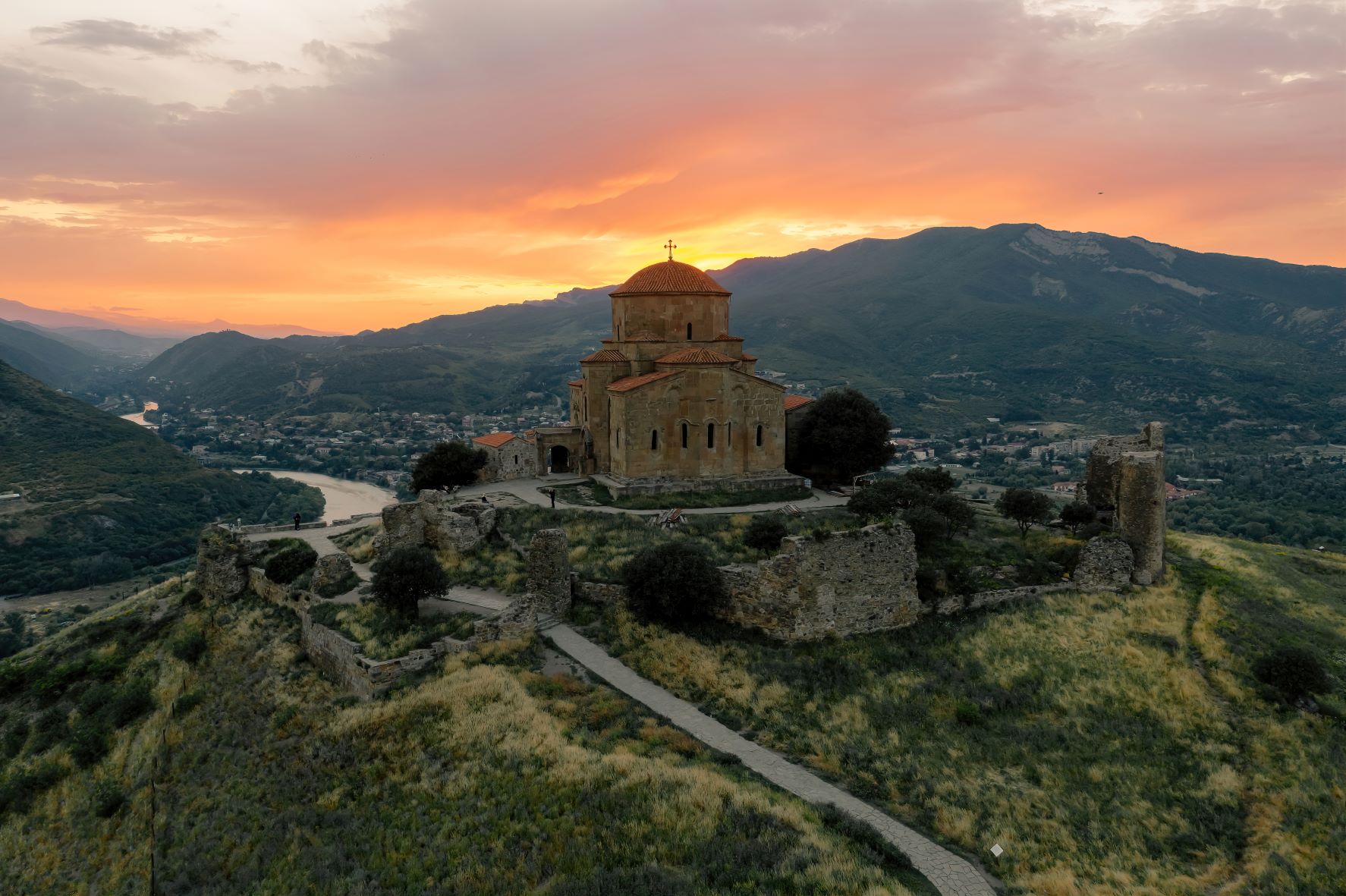
4. Samtavro Monastery – UNESCO World Heritage Site
📍41.84655671724965, 44.71847277258204
Samtavro Monastery, along with Svetitskhoveli Cathedral and Jvari Monastery, is a UNESCO World Heritage Site. The main church was built in the 11th century, but records of a church at this location date back to the 4th century, as mentioned in the life of St. Nino.
During the Soviet era, the nuns had to work as textile workers to help save the monastery. Today, you can find craft workshops operating on the grounds. Samtavro is one of the most significant historical and cultural sites in Mtskheta.
5. Bebris Tsikhe Fortress – Part of the Museum-Reserve
📍41.855611893491535, 44.722843011205555
Bebris Tsikhe Fortress was built in the 9th century on the site of even older fortifications dating back to around the 1st century BC. It was constructed to protect the capital along the only route between the mountains and the Aragvi River from the north.
Today, only ruins remain, but it’s worth a visit to wander among the ancient stones and take in the beautiful views of the river, park, and historic neighborhoods. The fortress is part of the archaeological museum reserve in Mtskheta, along with the Samtavro burial site (2nd-3rd centuries BC) and the settlement of Armazi (3rd century BC).
From Personal Experience:
You can easily reach this landmark by minibus from the city. The hike to the top is straightforward and takes about 10 minutes—no special footwear is needed. While many people say that Jvari offers the best view of Mtskheta, Bebris Tsikhe has its own unique charm as well.
6. Pompey's Bridge, Submerged by the Hydroelectric Power Station
📍41.839068936892325, 44.70615964004114
In Mtskheta, you can find a stone bridge that dates back to the 1st century BC. It was built during the time of the Roman consul Pompey the Great and connects both sides of the Mtkvari River. The bridge was in use until the 1950s when a hydroelectric power station was built, raising the water level in the river and submerging the bridge. Today, you can only see the partially ruined ancient bridge when the hydroelectric station releases water.
7. Shio-Mgvime Monastery
📍41.86241681131433, 44.64048274745124
Shio-Mgvime Monastery is located about 10 km from Mtskheta. It’s definitely worth a visit for its stunning location, nestled in a narrow gorge between cliffs. The monastery is still active and was founded by the monk Shio in the second half of the 6th century. The main building, known as the Upper Church, dates back to the 12th century. While the exterior is quite simple, the interior features some unique frescoes.
From Personal Experience:
This place is great for those seeking solitude, so I recommend visiting on a weekday morning or evening. On weekends, tours and services draw many visitors, making it difficult to enjoy the peace and quiet. Even on weekdays, you’ll find quite a few tourists here, as it’s a popular spot that many consider one of the most interesting in the region.
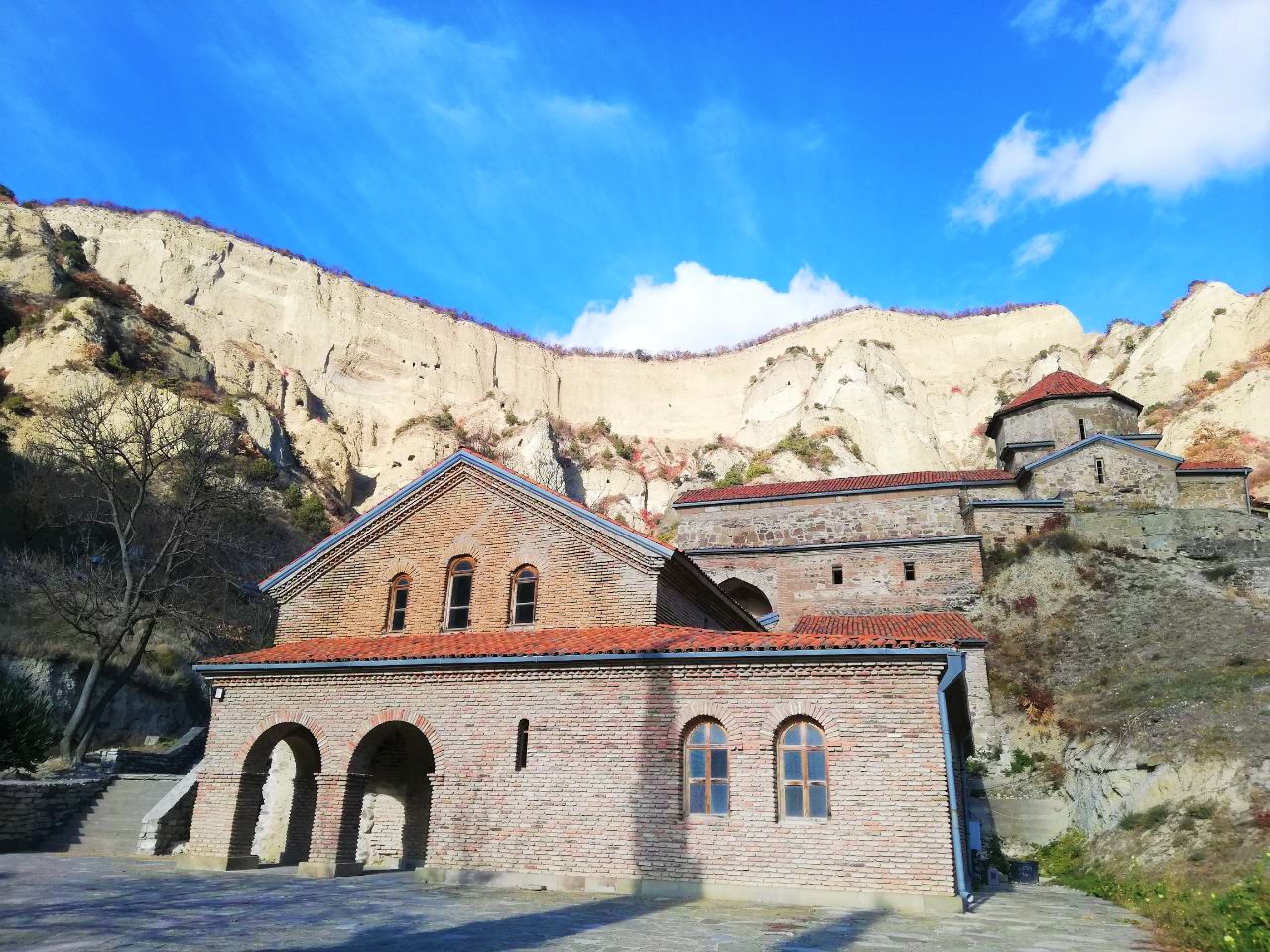
8. How to Get to Mtskheta
By Train: You can reach Mtskheta by taking an electric train to Borjomi or a train to Kutaisi or Zugdidi, all of which stop in Mtskheta. A ticket for the electric train costs 2 lari, while a ticket for the regular train costs 8 lari. Electric trains typically depart in the evening, while the other trains leave early in the morning. Keep in mind that you will need to walk about 3 km from the station to the city center.
By Minibus: This is the most popular option for those looking to explore Mtskheta. Minibuses leave from Didube Station every half hour from 8 AM to 8 PM, taking about 40 minutes to reach Mtskheta. The price is around 5 lari, and you should pay in cash.
By Rental Car: Renting a car will cost around $40-50 per day, plus about $10 for gas for a round trip. A deposit may be required.
By Taxi: A one-way trip will cost approximately 30 lari one way. However, waiting fees can add up if you plan to spend a long time exploring, making it less cost-effective. Returning from Mtskheta to Tbilisi at the same price can be tricky if the taxi driver is not waiting for you, as you would need to negotiate with local drivers.
Private Transfer GoTrip: You can choose any type of vehicle with a professional driver on the website, with prices starting from 84 lari (about $31). The driver will take you to Mtskheta and other nearby attractions like Jvari, Shio-Mgvime, or Bebris Tsikhe Fortress, which are further from the city. You won’t have to pay for waiting time, allowing you to explore and enjoy the ancient capital of Georgia at your leisure. The return trip home or to your hotel on the same day is included at no extra charge.
Book your trip from Tbilisi to Mtskheta
Mtskheta is perfect for a day trip from Tbilisi. With its stunning mountain landscapes, the confluence of rivers, and ancient architecture, it’s definitely worth a visit!

